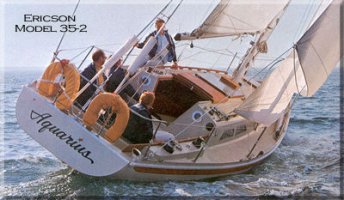Tracks
Steve and the boys are right-for proper upwind performance, you should use the inboard track for all headsails-The outboard track is intended for use when REACHING with a headsail, and as an anchor for the spin sheets (at the very back of the track), and for the afterguys (blocks mounted on a sliding padeye located at max. beam).
If you use the outboard track while sailing upwind, you are losing a significant amount of "height", or pointing ability.
The proper use of it when reaching is: As you begin to ease sheets on a close reach/beam reach, the sail will need a).the lead forward to prevent the top from twisting off excessively (the top of the sail will luff until you get the lead forward). There are times when you would WANT the top to twist off-this is when you are overpowered. In this case ease the sheets without moving the lead forward (of course you would be better off to roll in some sail, then reset the lead so the whole, smaller sail is functioning 100%, and b). the lead outboard to keep the slot open (remember you will also be easing the mainsail as you begin to reach, and if you leave the headsail on the inboard track, the slot will narrow. This will cause excessive backwinding of the mainsail and result in a loss of performance.
So, as you reach off, the lead position should go forward and outboard-progressively more as your sailing angle broadens. Many sailors will take the tail of the active sheet, run it through a snatch block located on the outboard track and about 18-24" forward of the inboard track location, then to the headsail. As you ease the sheets, take this tail to another winch, and trim the sail outboard-at first somewhere between the 2 tracks, and eventually by the time you are on a beam or broader reach, you will be entirely on the outboard lead, and you can untie the end of the sheet that was used for the inboard track. Reverse the process as you head back up to a beat. Pretty trick trick, no? Of course, many sailors use a dedicated "short sheet" for this (sometimes also known as barberhauling),. which is also fine. When cruising I am often too lazy to go get the short sheet, so I just use the tail of the active sheet!
The only time the outboard track may be effective for going upwind would be when using a real storm jib in severe conditions, when inboard sheeting simply overpowers the boat. Of course, height will suffer, but it may be the best bet in extremem conditions.
Fair winds all!
S

